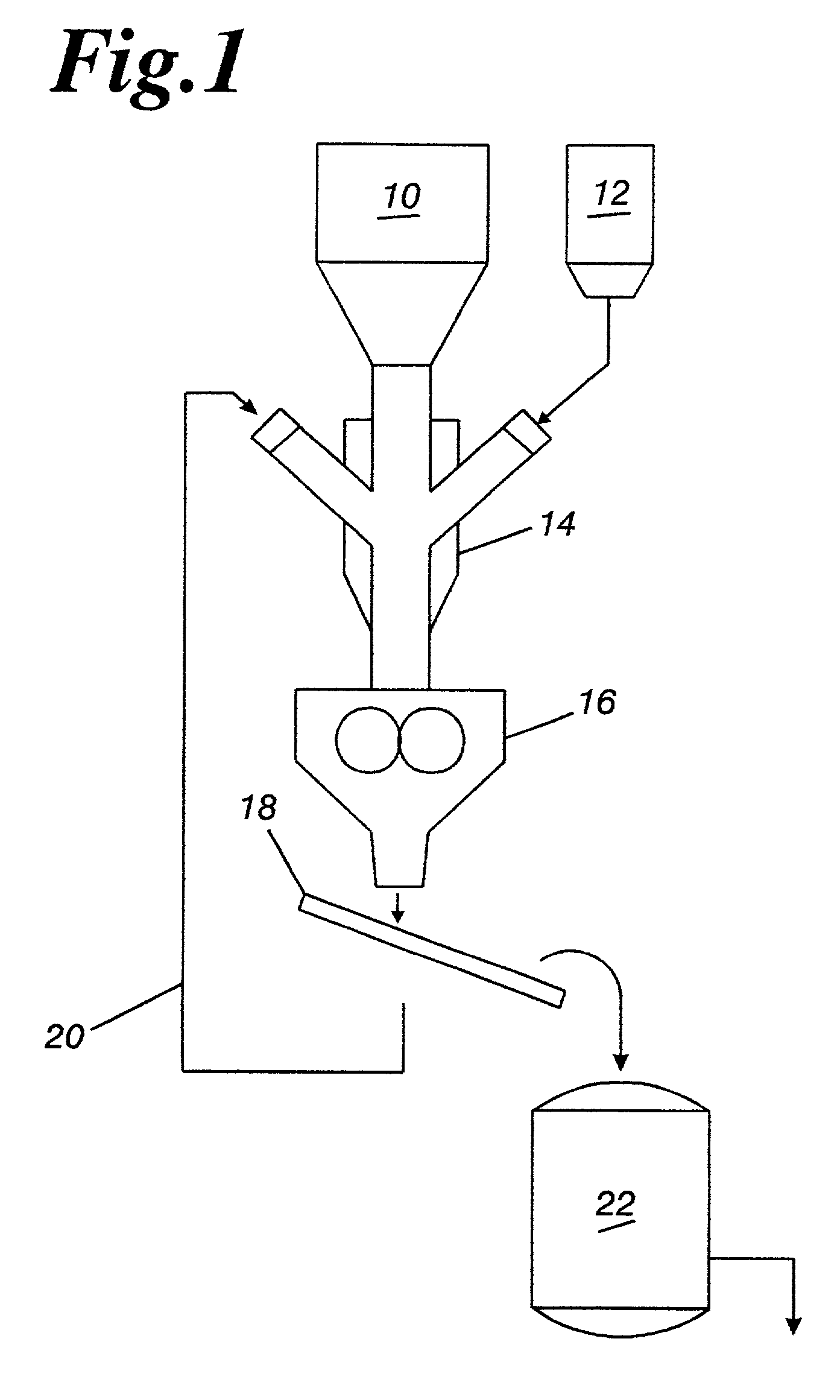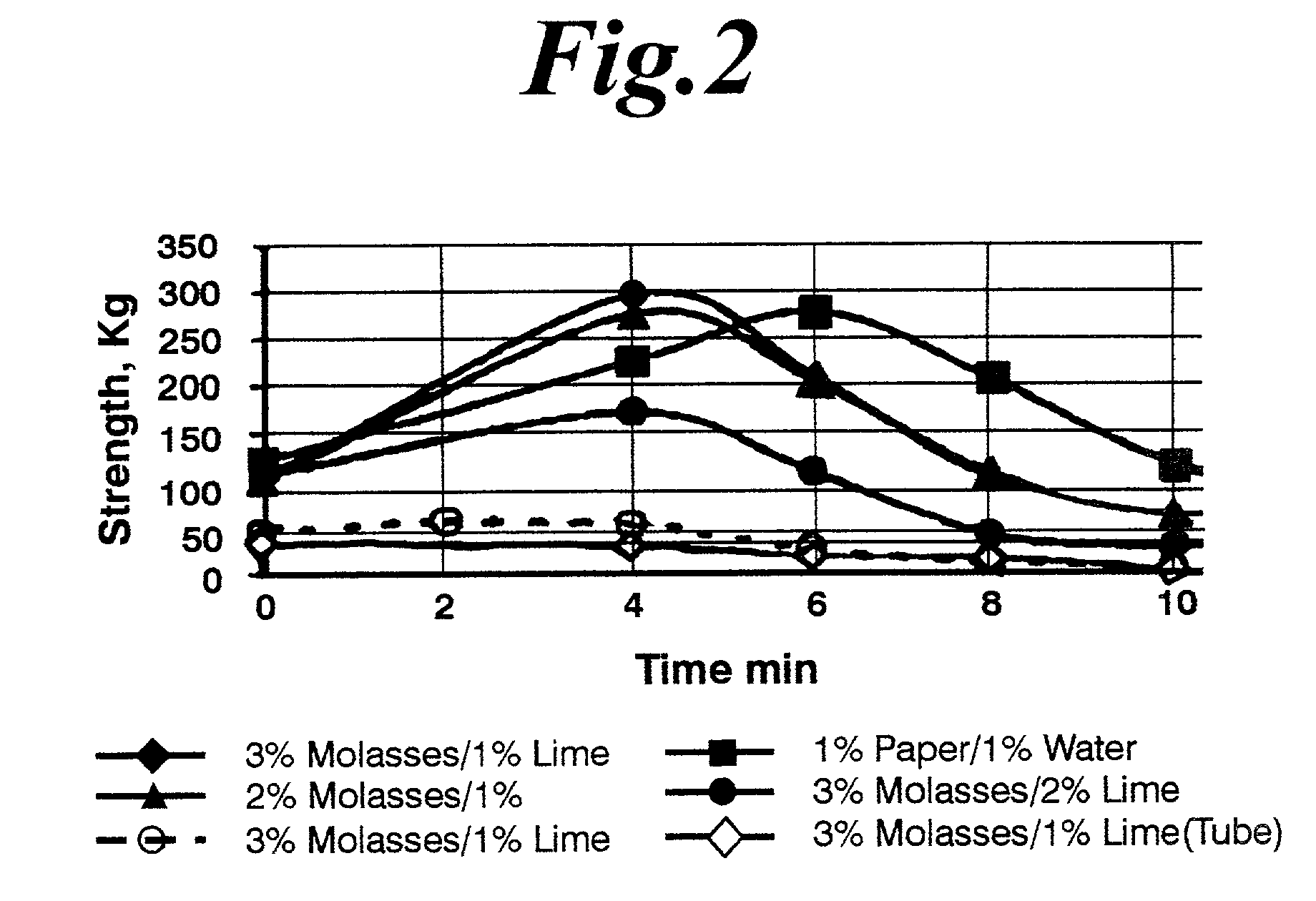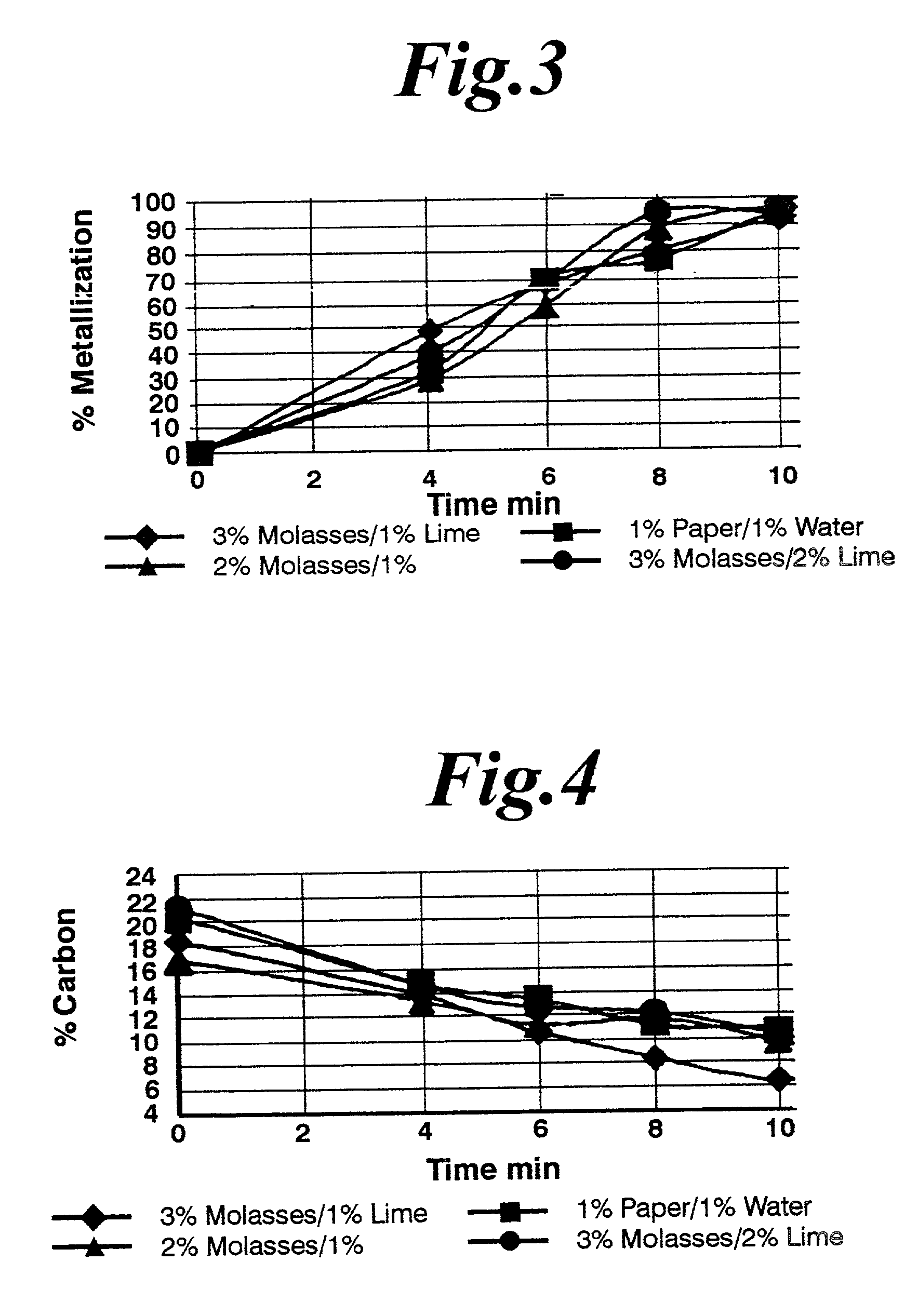Method of producing a metallized briquette
a metallized briquette and briquette technology, applied in the direction of process efficiency improvement, etc., can solve the problems of large quantity of steel dust and other wastes, large amount of steel mill waste, etc., and achieve cost-effectiveness, high strength, and easy penetration of slag layer
- Summary
- Abstract
- Description
- Claims
- Application Information
AI Technical Summary
Benefits of technology
Problems solved by technology
Method used
Image
Examples
example 1
[0036] The usefulness of cellulose as a binder in green briquettes was tested by preparing a series of test samples, each consisting of a 20 kg batch of iron-containing waste material. Each batch contained approximately 80% by weight of iron ore pellet feed (-0.074 mm) and iron oxide fines (.about.0.85 mm) and approximately 20% by weight of pulverized coal as a reductant, sized so that 80% of the reductant was under 200 mesh (-0.074 mm). Applicable binders were added to the mix in amounts of approximately 1% by weight. The components were mixed in a lab mix muller for approximately 5 minutes. The entire batch was then fed to an industrial briquetting machine. After briquetting, good whole briquettes were separated by hand from any fragments or remaining particulates. The fragments and particulates were recycled to the briquetting machine. Green briquette crush strength was determined by analyzing ten random samples from the good whole briquettes. The briquettes were then reduced in ...
example 2
[0040] A study was conducted on 12 cc briquettes produced in a substantially similar manner to those produced in Example 1, except that the agglomerate composition consisted of approximately 64.5% virgin iron feed, 20.5% coal reductant, 13% screened pellet fines, and a 1% cellulose / 1% water binder combination. Separate trials were run using the above combination of materials with the 13% of screened pellet fines being -3 Mesh (-6.7 mm), -6 Mesh (-3.35 mm), and -20 Mesh (-0.85 mm).
[0041] Referring to FIG. 6, it was found that the compacts having smaller fine particle size exhibited higher green crush strengths, but that even the compacts made with the large -3 Mesh fines had acceptable average compact green crush strength of 26 kg. This compares to the 33 kg green crush strength developed with a -20 Mesh fines fraction. With further reference to FIG. 6, the large -3 Mesh fine fraction did not adversely affect DRI metallization, as the metallization achieved with compacts of various f...
PUM
| Property | Measurement | Unit |
|---|---|---|
| temperature | aaaaa | aaaaa |
| temperature | aaaaa | aaaaa |
| size | aaaaa | aaaaa |
Abstract
Description
Claims
Application Information
 Login to View More
Login to View More - R&D
- Intellectual Property
- Life Sciences
- Materials
- Tech Scout
- Unparalleled Data Quality
- Higher Quality Content
- 60% Fewer Hallucinations
Browse by: Latest US Patents, China's latest patents, Technical Efficacy Thesaurus, Application Domain, Technology Topic, Popular Technical Reports.
© 2025 PatSnap. All rights reserved.Legal|Privacy policy|Modern Slavery Act Transparency Statement|Sitemap|About US| Contact US: help@patsnap.com



